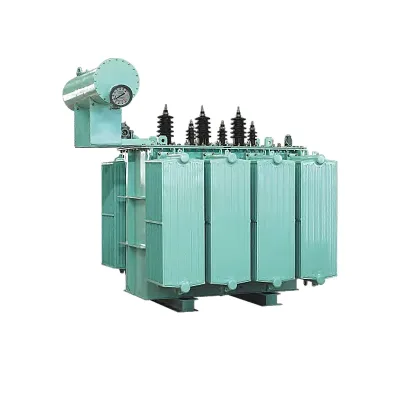Technical Deep Dive: How SF₆-Free Switchgear Works and Why It Matters

I. The Science Behind SF₆ and Its Alternatives
-
Insulation: Preventing electrical breakdown between conductors and ground. -
Arc Interruption: Safely extinguishing arcs during circuit breaker operations.
1. Solid Insulation (Epoxy Resin-Based Designs)
-
Nano-composite additives: Silica or alumina nanoparticles enhance dielectric strength and thermal stability. -
3D Electric Field Simulation: Finite element analysis (FEA) optimizes component geometry (e.g., rounded edges, graded insulation thickness) to prevent local field concentrations. -
Modular Assembly: Pre-molded solid insulation components snap together, reducing assembly errors and ensuring consistent insulation gaps.
2. Vacuum Interruption + Air/Solid Insulation
-
Arc Quenching: When the circuit breaker opens, the contacts separate in the vacuum chamber. The lack of gas molecules means the arc cannot sustain itself, extinguishing almost instantly. -
Insulation: For MV applications (12kV–40.5kV), air suffices as the insulating medium. For higher compactness, solid insulation (e.g., epoxy-coated busbars) is added.
-
Proven Reliability: Vacuum interrupters have been used for decades in MV applications with >99.9% success rates. -
No Gas Dependency: Eliminates SF₆ entirely or reduces it to trace amounts (in hybrid designs).
3. SF₆ Alternatives (Transitional Solutions)
-
Gas Mixtures: g³ combines fluoronitrile (a low-GWP compound) with CO₂ or N₂ to dilute its reactivity. -
Backward Compatibility: Designed to fit existing GIS enclosures, easing retrofitting.
II. Design Challenges and Engineering Solutions
1. Electric Field Management
-
Rounded Corners: Sharp edges concentrate electric fields; SIS designs use large-radius busbars and smooth transitions. -
Shielding Layers: Internal copper or aluminum foils redistribute charges, evening out the field. -
Stress Cones: In cable terminations, tapered insulation guides electric fields away from weak points.
2. Compactness vs. Insulation Trade-offs
-
Hybrid Designs: Combining vacuum interruption (for arc quenching) with solid insulation (for compactness). -
Multi-layer Insulation: Stacking thin layers of epoxy resin with embedded shielding to maximize dielectric strength per unit volume.
3. Monitoring and Maintenance
-
Embedded Sensors: Partial discharge (PD) sensors (UHF or acoustic) monitor for early signs of insulation degradation. -
Thermal Imaging: Infrared cameras detect hot spots in vacuum interrupters or solid components. -
Predictive Analytics: AI algorithms analyze sensor data to forecast maintenance needs.
III. Practical Benefits for Utilities and Industries
1. Environmental Compliance
2. Operational Cost Savings
-
No Gas Handling: Eliminates the need for SF₆ refills, leak checks, and adsorbent replacements. -
Longer Lifespan: Solid insulation and vacuum components last >30 years with minimal maintenance.
3. Safety and Reliability
-
No Toxicity Risks: SF₆ is non-toxic but can produce toxic byproducts (e.g., HF, SO₂) during arcing. SF₆-free designs avoid these hazards. -
Resilience to Harsh Conditions: Solid insulation is immune to humidity, salt fog, and altitude effects (unlike air-insulated GIS).
IV. Case Studies and Global Adoption
-
Europe: Cities like Copenhagen and Vienna have mandated SF₆-free GIS for all new substations. ABB’s SafeRing AirPlus (using g³) and Siemens’ NXPLUS C-SIS are widely deployed. -
Asia: China’s State Grid has piloted solid-insulated switchgear in Shanghai’s urban grid, reducing substation footprints by 40%. -
North America: Utilities like PG&E are testing vacuum-based MV switchgear for solar farm connections.
Conclusion
Zoeken
Categorieën
- Art
- Causes
- Crafts
- Dance
- Drinks
- Film
- Fitness
- Food
- Spellen
- Gardening
- Health
- Home
- Literature
- Music
- Networking
- Other
- Party
- Religion
- Shopping
- Sports
- Theater
- Wellness
Read More
International Influence on Wall Decor
Wall art reflects cultural trends and personal preferences, making global awareness an asset for...
Petroleum Sorbent Pads Market to Reach USD 52.12 Billion by 2034, Driven by Oil Spill Management and Environmental Safety Solutions
Market Overview
The global petroleum sorbent pads market is witnessing...
Acquired Lipodystrophy Treatment Market Growth Drivers, Leaders, Graph, Insights, Research Report
"Executive Summary Acquired Lipodystrophy Treatment Market :
Global acquired...
New Trending Collections High Quality Hermes Bags
New Trending Collections High Quality Hermes Bags



